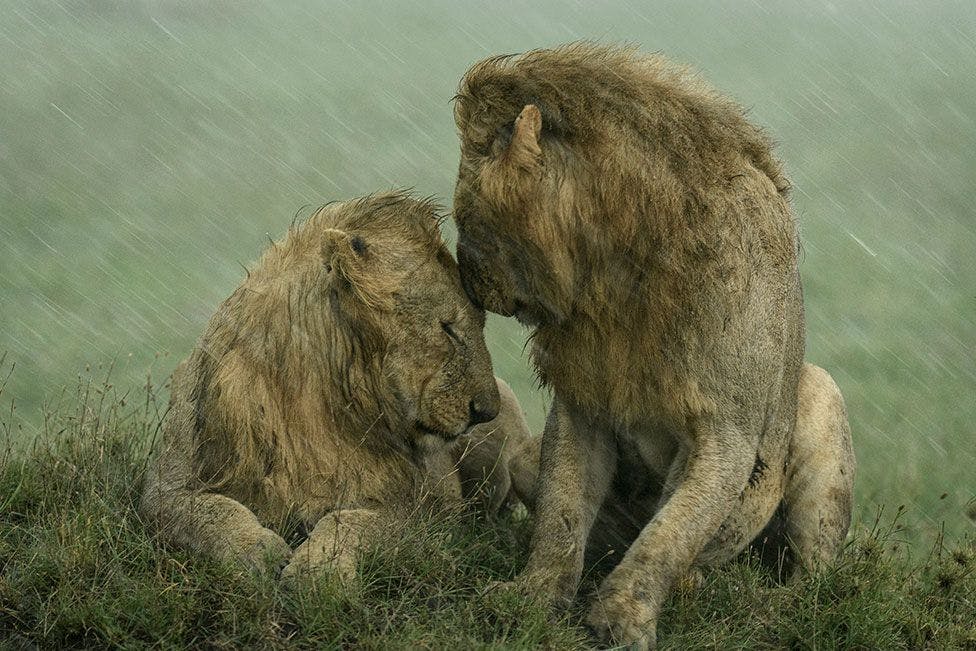A wrap of the biggest stories and best writing about the outdoors from New Zealand and around the world.
Such was the quality of 2021’s Wildlife Photographer of the Year competition, this outstanding image by USA’s Ashleigh McCord was only a finalist.
It shows a lovely moment between two lions in the rain at the Maasai Mara National Reserve in Kenya.
The prestigious photography event is run by the Natural History Museum in London, where the top five images (of which Ashleigh’s picture is one) are on display until June.
The winning image is Cristiano Vendramin’s shot of a frozen lake in Italy. Click here to see that image and all four runners-up pictures.
In total, there were 50,000 entries from 95 countries and more than 31,800 people voted for Cristiano’s winning photograph.
If you’ve taken a photo of the great outdoors that you’re really proud of, there’s still time to enter the 2022 Wilderness Photo Competition, where you could win a Panasonic Lumix G85 worth $1199.
Part of Te Araroa Trail might not be fixed until September
The popular Paihia-Ōpua walkway, Bay of Islands, has been closed since December after rot and marine worms were found to have seriously damaged the boardwalk and bridge there.
The bridge is at risk of collapse and the authorities have re-allocated funding intended for the long-term future to get the bridge fixed as soon as possible.
They hope to start work in March and have it finished by the end of July, but due to contractors working at capacity and problems sourcing building materials, work might not be completed until September.
The Paihia-Ōpua walkway is part of the Te Araroa Trail and crosses a tidal inlet. Without it, there’s no safe way across for walkers. Read more at the New Zealand Herald.
Could seashells be key to stabilising the planet?
Two professors who have written a fascinating article for RNZ certainly hope so. Rupert Sutherland, a professor of tectonics and geophysics, and Laia Alegret, a professor in palaeontology, say it’s the sea that holds the greatest carbon storage – and hope – in keeping our planet stable as it warms.
The common perception is that trees and soil are the planet’s chief carbon storage tanks, but new research shows that the formation of seashells on the ocean floor is the main long-term mechanism of carbon storage today.
Rescue of climbers stuck on tiny ledge described as ‘harrowing’
Rescuers have managed to save two climbers who were trapped near the top of Mt Sabre, around 2000m above the valley floor in Fiordland’s Darran Mountains.
They had been trying to abseil when their rope got stuck, and were unable to climb back up.
They spent the night on a ledge before search and rescue volunteers lowered a 60m longline beneath a helicopter. There was just enough room for the climbers and one rescuer to stand shoulder to shoulder on the ledge. Read more about this rescue on Stuff.
Why mining on conservation land doesn’t stop
There’s an insightful piece here on why mining continues despite the government’s apparently straightforward promise to ban the practise on conservation land in 2017.
Mining is still a thriving industry and a new mine planned near Martha Mine at Waihi, Coromandel, has sparked strong opposition.
The government hasn’t yet decided whether a ban should include Stewardship Land – land allocated to DOC that’s deemed to have conservation value – says Stuff national correspondent Charlie Mitchell. Mitchell adds that the 2017 promise also sits awkwardly with the fact that phasing out fossil fuels will take time.







